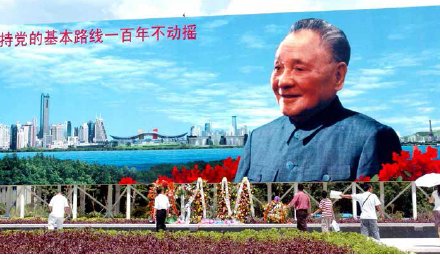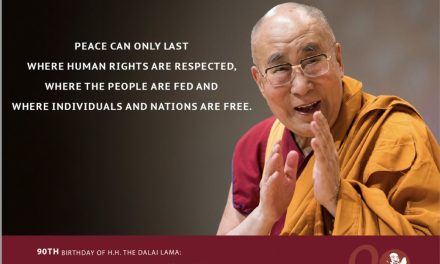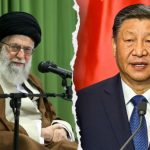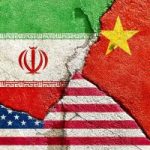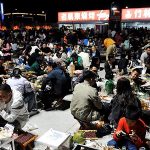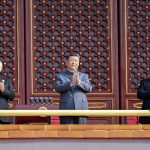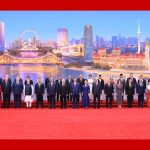By: QingMin Wang (王庆民)
The article was originally published in Singapore’s Lianhe Zaobao (联合早报).
On May 22, the U.S. Department of Homeland Security announced the revocation of Harvard University’s eligibility to enroll foreign students. The university was banned from admitting international students and current international students were ordered to transfer or leave the United States. Although the ban has been temporarily suspended due to Harvard’s legal challenge, it has sparked widespread debate and has nonetheless dealt a severe blow to the university’s reputation for admitting foreign students and fostering global academic exchange. Previously, the Trump administration had already drastically cut funding to Harvard and other U.S. universities and recently proposed to terminate multiple federal partnerships with Harvard, imposing various “sanctions” on the university.
In both U.S. and international media, among commentators, scholars, and students, there has been almost unanimous criticism of the Trump administration’s ban on Harvard’s international students and its added funding cuts to the university. Critics argue that these measures violate the basic rights and academic freedom of Harvard’s faculty and students, undermine America’s education and research capabilities, weaken U.S. competitiveness, and help its rivals. Shortly after the announcement of the ban, several leading global universities, including the Hong Kong University of Science and Technology, declared their willingness to accept international students admitted to Harvard who were affected by the Trump order, quickly validating the views of the ban’s opponents.
To many—especially those with status or influence—banning Harvard from enrolling international students and cutting or eliminating funding to universities are entirely harmful actions and without benefit. Why, then, would the Trump administration risk “universal condemnation” to carry out such measures?
A deeper look reveals that while U.S. elites, internationally engaged citizens, and foreigners with close ties to the U.S. broadly condemn such policies, there are actually many Americans who support Trump’s “sanctions” against Harvard. These supporters are often ignored by major media and the elite-dominated mainstream discourse having not received attention proportionate to their numbers.
Trump was democratically elected, and the Republican Party secured a majority in Congress through elections, which means their policies have at least the endorsement of half the American electorate. Trump’s base is primarily composed of right-wing conservatives, populists, and working-class whites—groups that have long supported attacks on elite, left-leaning, diverse, and progressive institutions like Harvard. While the elite lament Harvard’s inability to enroll international students and loss of funding, working-class conservatives and populists are jubilant.
Many non-Americans often view and assess the U.S. as a monolith. In reality, the U.S. has always been extraordinarily complex, with vast differences and even direct contradictions in values and demands among its various classes, ethnic groups, and ideological camps.
One major internal divide in America is between the elites and the working class. Since its founding, especially from the late 19th century to the present, the U.S. has produced world-renowned thinkers, scientists, and politicians who have made monumental contributions and altered the fate of humanity. The U.S. has become the world’s top power and has been leading the globe in economics and technology for a century. In global university rankings, scientific breakthroughs, and corporate standings, the U.S. dominates the top tiers.
At the same time, however, the U.S. has long been one of the most undereducated, socially insecure, poverty-stricken, religiously superstitious, and anti-intellectual developed nations in the world—sometimes even faring worse than many developing countries. Large numbers of Americans genuinely believe in anti-vaccine theories, deny the reality of climate change, believe the moon landing was faked, or that the 9/11 attacks were “staged by the government.” These people are not only misinformed but sincerely believe the lies, rejecting truth and lacking scientific thinking and rational discernment.
The gap between working-class Americans and elites is vast in terms of material wealth, spiritual fulfillment, and worldview. The U.S. is among countries with the greatest wealth inequality. Some elites earn millions annually with ease and have homes around the globe, while rural Americans work hard and are mindful of even a few dollars in tips. Despite being the hegemon of globalization, over half of Americans do not have a passport, and more than 70% of residents in conservative “red states” have never traveled abroad. Elites indulge in avant-garde art and converse with global intellectuals, while working-class Americans are spiritually immersed in “fast food culture” and momentary pleasures, surviving coarse realities with the motto “live for today.”
Over two centuries of American development—especially its post-WWII boom—has brought uneven benefits to different groups. Even if life today is better than in the past, the relative gains and losses compared to fellow citizens can generate both happiness and misery. As the old saying goes, “The people do not resent poverty but inequality; they do not resent scarcity but insecurity.” This is a universal human sentiment.
The contrasting lifestyles and conditions of elites and working-class Americans significantly shape their values and priorities. Elites, who have greatly benefited from globalization and modern education, naturally support diversity, internationalism, and academic prosperity. On the other hand, working-class Americans, dislocated by globalization and multicultural trends, and burdened by relative poverty and pain, tend to support exclusionary populism, oppose immigration, and prioritize local interests. Political conflicts and daily disputes between the two camps are growing more frequent and intense, deepening their divisions and hostility.
Though the American elite class publicly champions multiculturalism, openness, and compassion for the weak, in reality many elites are hypocritical and self-serving (a global phenomenon, not limited to the U.S.). They say one thing and do another. Even those who are genuinely compassionate harbor arrogance and prejudice, often showing selective empathy by welcoming foreign immigrants, religious minorities, and LGBTQ groups while looking down upon working-class whites and showing little “empathetic understanding” for conservatives. This selective empathy intensifies the feelings of abandonment and resentment among those excluded from elite sympathy, fueling even deeper alienation and anger.
As a result, the working-class population—already estranged from elites in class and identity and resentful of their values—develops an even more profound hatred toward elites and everything they support. This resentment often manifests destructively, even at their own expense.
Trump’s “sanctions” against Harvard may not benefit working-class Americans directly or the conservative-populist segment’s cherished American nation. In fact, these actions harm the economy, politics, and international standing of the U.S., along with the welfare of all Americans. But to working-class citizens filled with anger at the elite, it is worth suffering some losses if it means the elite are brought down and punished. Their hostility toward the elites is so extreme that they adopt the attitude of “let us all perish together” if it means dragging down the establishment.
For working-class Americans, they cannot study at or directly benefit from Harvard. Harvard’s environment and values are the opposite of theirs—it is a bastion and symbol of the elite class they resent and despise. Thus, their wish to “bring down Harvard” is only natural. These individuals are precisely the public support base for Trump’s actions and the Republican Party’s continued rule. With Trump as president and the GOP in control of Congress, their long-held wishes are now becoming reality.
The conservative, exclusionary, anti-intellectual views and behavior of working-class Americans may be irrational—but their sense of loss and resentment toward the elite is understandable and deserves sympathy. The vast income gap, entrenched class divisions, elite arrogance and bias, and progressivism’s preoccupation with “identity politics” over class concerns and the needs of lower- and middle-class whites have all exacerbated the polarization, conflicts, and backlash fueling the rise of conservative populism and the “alt-right” in the U.S.
Today, as criticism of the Trump administration’s “sanctions” against Harvard mounts in domestic and international media, few have paid attention to the popular support behind these actions—support born from the persistent arrogance and prejudice of the elite class. A recent article in The New York Times lamented that Trump’s corruption failed to provoke mass outrage and expressed bafflement that he continues to enjoy widespread support. This shows that elites still fail to grasp the depth of working-class resentment toward them and the establishment order. Many working-class Americans would rather tolerate or even celebrate a corrupt, anti-intellectual demagogue if it means punishing elites and upending the system.
There are indeed Americans who have noticed and reflected on these issues—but such reflections remain limited, marginalized, and lack the attention, action, and effective solutions needed to reverse the deep divisions between elites and working-class groups in today’s American society.
As indifference, arrogance, and polarization continue, Trump and extremist populism will retain their support. Incidents like Harvard being banned from enrolling international students or international collaboration programs being canceled will only spread to more sectors and institutions. Under this climate of division and hostility, mainstream media and elite criticism of Trump’s policies will not only fail to sway the working class but may even reinforce their support for him.
The United States’ social division, populist rise, group antagonism, and political polarization have deep and complex roots—now entrenched in the nation’s very marrow. The Harvard incident is but one flare-up of this chronic illness. Although the author is pessimistic about the current state and future of the U.S., change is still possible.
Such change will require more reflection, sacrifice, and empathy from the American elite, especially a class-based—not merely identity-based—perspective on social issues. This does not mean that working-class Americans are right, and elites are wrong; rather, the higher one’s status and gains, the greater one’s responsibility and duty to give back. That is the essential precondition for bridging the elite-working-class divide and taking a crucial step toward a fairer, more just America.


